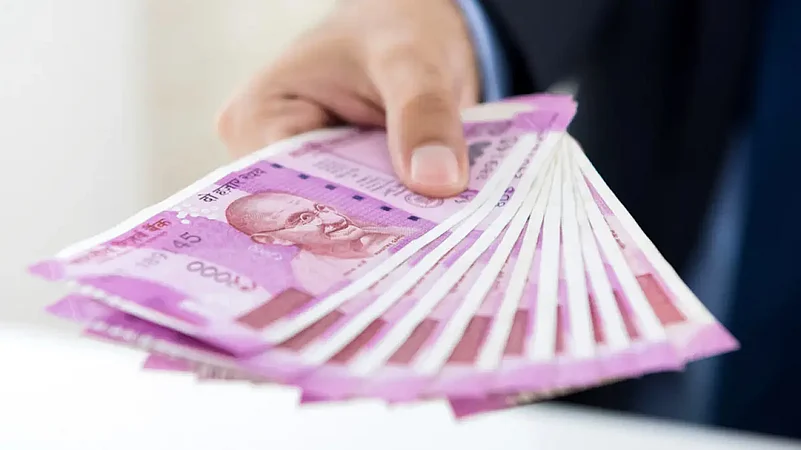The Indian rupee came under renewed pressure against the US dollar on Monday after US Federal Reserve Chair Jerome Powell said on Friday at the Jackson Hole symposium that the Fed would raise rates as high as needed to restrict growth, and keep them there "for some time" to bring down inflation running well above its 2 per cent target.
The rupee fell to its all-time low of 80.15 against the US dollar in intra-day trade on Monday.
The aggressive chorus from central banks lifted short-term yields globally, while further inverting the Treasury curve as investors priced in an eventual economic downturn.
Advertisement
This all benefited the safe-haven dollar, which briefly shot to a fresh two-decade peak at 109.48 against a basket of major currencies.
The Fed has indicated it will raise rates into next year as it tries to quell demand and bring down prices for goods and services. But some investors speculated the central bank might pause or even reverse course next year if inflation subsides, leading to a rally for stocks in July and early August.
The rise of the dollar and yields has depressed gold, which was last flat at $1,737.45 an ounce.
The value of the Indian rupee to the US Dollar works on a demand and supply basis. If there is a higher demand for the US Dollar, the value of the Indian rupee depreciates and vice-versa.
Advertisement
If a country imports more than it exports, then the demand for the dollar will be higher than the supply and the domestic currency like Rupee in India will depreciate against the Dollar.
The rupee's fall these days is mainly due to a strong dollar overseas after US Fed said that it will continue to raise rates making dollar expensive against other major currencies, analysts said.
The Rupee was on the decline since early this year, especially after supply chain disruptions due to the Russia-Ukraine war, global economic challenges, inflation, and high crude oil prices, among other issues. However, after commodity prices cooled down in international markets it led to marginal bounce in the value of Rupee which rose to 76 against the dollar.
How Will Rupee Depreciation Impact Indian Economy
Since India mostly depends on imports, including crude oil, metals, electronics semiconductors, etc. the country makes payments in US Dollars. Now if the Rupee is weak, it has to pay more for the same quantity of items. In such cases, the cost of raw materials and production goes up which gets passed on to the consumers in turn leads to spike in inflation.
On the other hand, a weakening domestic currency boosts exports as shipments get more competitive and foreign buyers gain more purchasing power.
The falling Rupee's biggest impact is on inflation, given India imports over 80 per cent of its crude oil requirement, which is the country's biggest import item. The global crude prices have fallen from multi-year high of $140 per barrel which it touched in the aftermath of Russia's invasion of Ukraine in February this year.
Advertisement
Education bill in the US is set to increase as the Rupee's depreciation will directly impact tuition bills on the upside. Indian students who are studying in the US will see their cost of studies going up at a time when inflation is at 40 year high in the US and prices of everything from cooking oil to petrol have skyrocketed. Media reports suggest that people in US are withholding their utility bills.
The rising cost of living and the impact of inflation have left millions of households across the U.S. with outstanding utility bills — an issue that could get worse with power cuts on the horizon in the upcoming winter season, news website The Hill reported.
Advertisement
The National Energy Assistance Directors Association, which collects national data on energy assistance programs, says 1 in 6, or more than 20 million households, are behind on their power bills.
A primary source behind the utility debt is a surge in energy prices. Natural gas prices have jumped since Russia invaded Ukraine in February. The cost of natural gas was up 30.5% year-over-year in July, according to the U.S. Labor Department. The average rate for electricity was up about 15% in July — the largest increase since 2006.
(With agency inputs)















 Just one email a week
Just one email a week